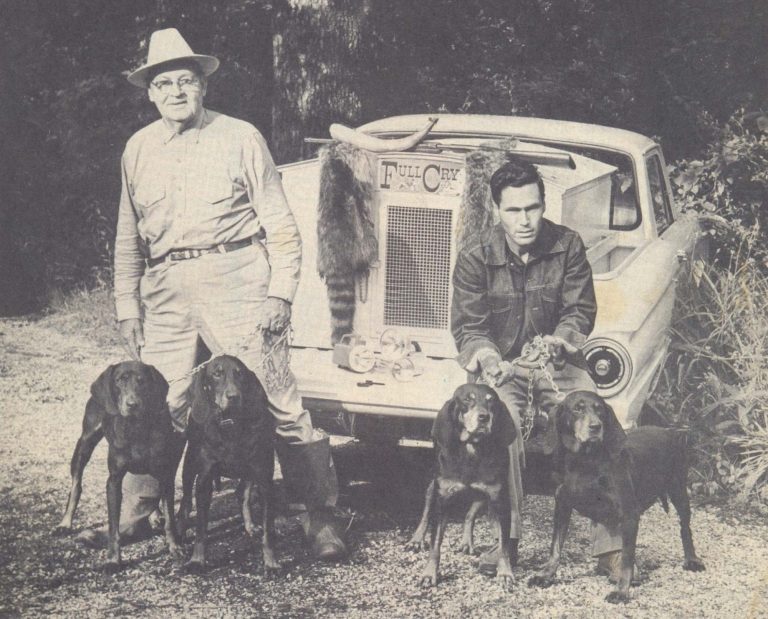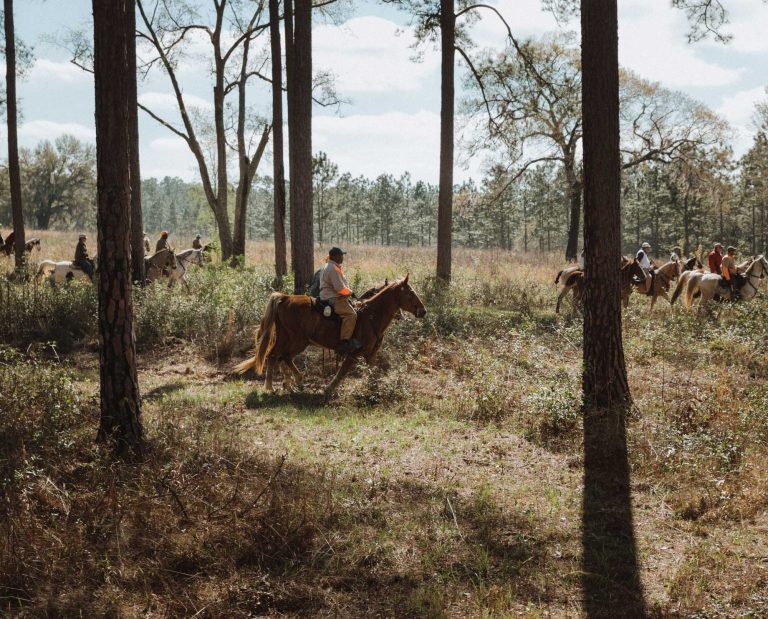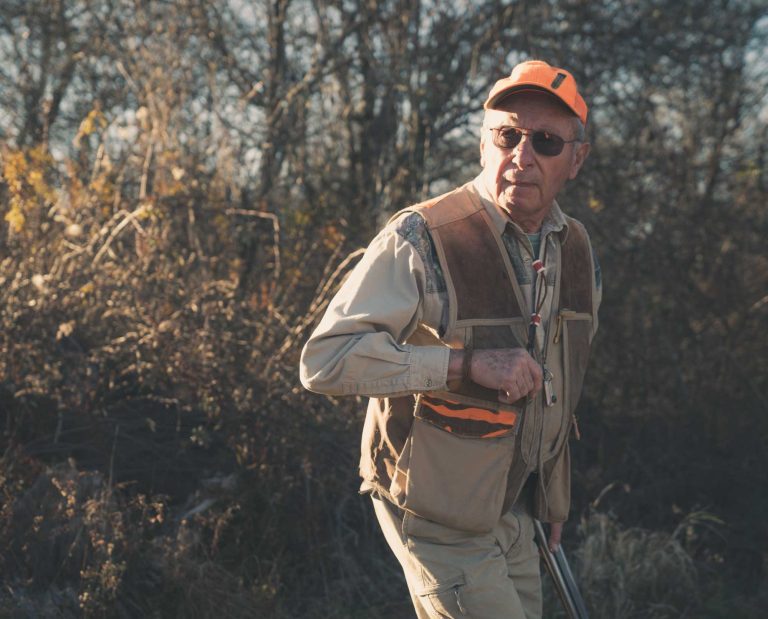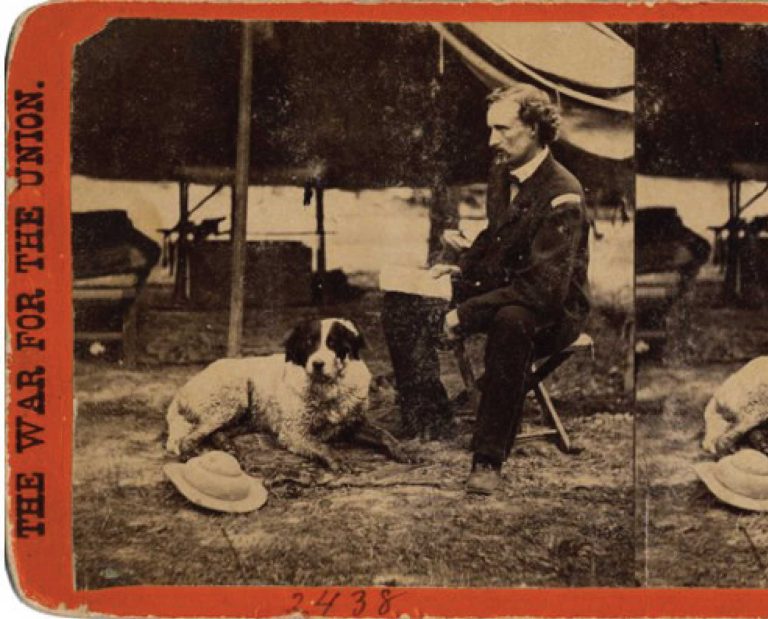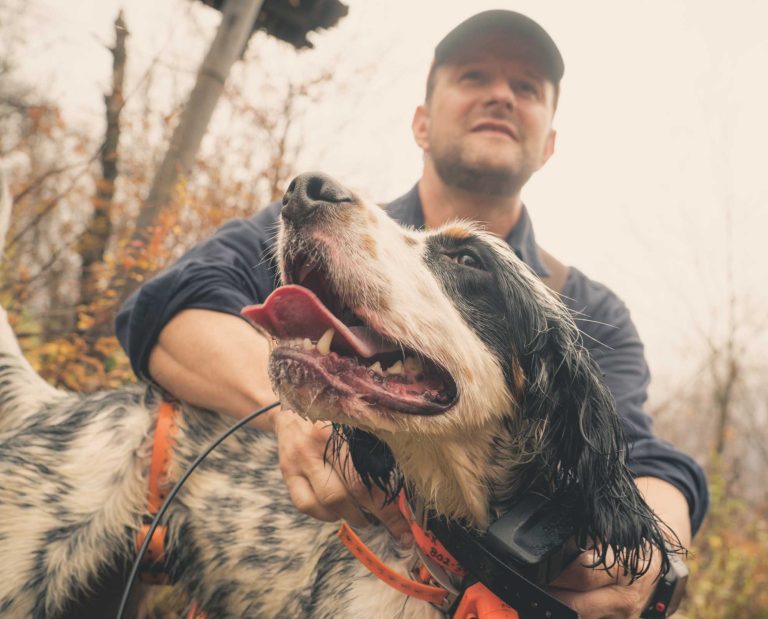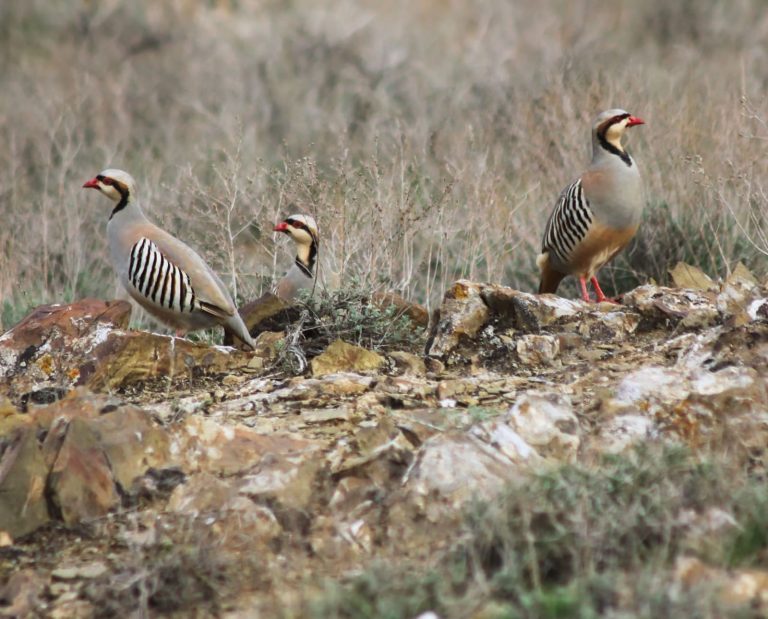Let the Dogs Lead the Way – A Project Upland Original Film
This is the story of Jennifer Wapenski, Managing Editor of Hunting Dog Confidential Magazine, and her path into the uplands behind a Deutsch Langhaar
The hunting partnership between man and dog developed thousands of years ago and it came from a deep bond of affection. I suspect it was the dog’s idea.
—Aaron Fraser Pass
Presented by Syren USA and Eukanuba Sporting Dog
A recent discussion in the Project Upland Community Facebook group revolved around the question of whether or not dogs actually lead more people to get into hunting. The overall consensus was that yes, dogs can indeed motivate folks to take up the sport. Even though I hunted many years dogless, my wife, Lisa Trottier, only got into hunting after we got our first hunting dog.
One of the things I’ve realized about our hunting dogs is that not only do they help us achieve a closer connection to the natural world, they also can act as a sort of conduit to help us make new friends and renew old acquaintances. Lisa and I started to realize this soon after we started going to Europe to photograph dogs for my first book. Months before, as we sought examples of particular breeds to use as subjects, we’d communicated with various people via email. Although that had been our only contact, no matter where we traveled, as soon as we got off the train or pulled into the driveway, it felt like we were meeting long-lost family members. Despite being from completely different parts of the world and speaking different languages, there was always an almost instant meeting of minds between people who shared the same burning passion for hunting dogs.
Since then, thanks to social media, we’ve continued to expand our list of friends connected by gun dogs. Some I consider close friends now, even though I’ve never, or only briefly, met them in person. Case in point: my friend, podcast partner and co-editor of Hunting Dog Confidential magazine, Jennifer Wapenski. Believe it or not, she and I have only met once in person, at Pheasant Fest 2020 in Minneapolis. But since then, we’ve spoken nearly every day and launched a podcast and magazine together. All thanks to the dogs.
And even though Jennifer is an adult-onset hunter, and I’ve been hunting since I learned to walk, one thing have in common is that we only got into hunting over gun dogs after we’d grown up and been on our own. Jennifer said,
I didn’t grow up with dogs; I considered it a great injustice leveled upon me, but in reality, it was probably the best decision for our family. But the wrong was righted the moment I married my husband; our first dog was born on our wedding day and joined our family eight weeks later. Bailey was a Greater Swiss Mountain Dog, so she wasn’t hunting by any stretch of the imagination, but she was a working dog through and through. She gave me a love for true working dogs who have a purpose to fulfill. She was our hiking companion and backpacking partner. Seeing her whole demeanor change when her pack came out showed me that dogs are at their best when they have a job and that I am at my best when I have a working dog in my life. Fast forward ten years or so. We had started to dabble in duck hunting a bit, and Bailey was aging, so it was time to start thinking about our next dog. We knew that we wanted a dog that would be able to participate in our extracurricular activities, which were starting to evolve from backpacking to include fishing and now hunting. I was listening to and reading everything I could get my hands on to learn more about the world of bird dogs. For my birthday that year, my husband, Joe, got me the finest book ever written on the subject: Pointing Dogs Volume One: The Continentals. I read that bible cover to cover and back again, imagining each of these amazing dog breeds and trying to decide which one would be the best fit for us. What sealed the deal was an upland hunting workshop co-sponsored by the Washington Department of Fish and Wildlife and Pheasants Forever. After some classroom instruction and clay shooting, they turned us loose in the field with an army of volunteers and their bird dogs. Joe and I were paired up with a guy and his three GSPs. I was in absolute awe as I watched these dogs work the field and point roosters. He was breathing whispered commands at the dogs—“Anna, easy,” “Over here”—and the dogs worked like a symphony. I was smitten. I shot a rooster and learned how to clean and process the bird, but the indelible mark from that day was the memory of the working bird dogs. Upon returning home, I started contacting various breeders, and within a few months, we were on a waitlist for a Deutsch Langhaar puppy. I never realized just how much my life would pivot at that moment, but the introduction of a bird dog into my life has sent me onto a strange and wonderful trajectory that I never could have imagined.
Listening to Jennifer’s story brought back memories of researching the Deutsch Langhaar and traveling to Germany and the US to photograph them and meet breed experts. And it turns out that one of the breeders I met and had the pleasure to hunt South Dakota roosters with was Cortney Schaefer, the breeder of Jennifer’s first pup. Cortney is now yet another friend I have thanks to the dogs. Jennifer described Cortney as “the quintessential breed enthusiast and ambassador” and then explained how, after narrowing the list of ideal breeds down to four or five, she started contacting breeders.
Some I heard back from, some I didn’t, but none were nearly as engaging as Cortney. She and I immediately hit it off . . . she described her dogs, asked me lots of questions, and—to the great joy of my engineer’s heart—told me about all the facts and data that stretched back for generation after generation of DLs. She really sold me on the benefits of getting a dog from a system that was built around performance testing and standards. With us being brand new hunters, there were so many variables . . . . I didn’t want the dog’s natural ability (or lack thereof) to be one of them. I also knew that a relationship with a breeder was going to be more than just a transaction of cash for a puppy. I’m sure I’ve overwhelmed Cortney with questions over the past four years, but she is truly a mentor in every sense of the word. When I decided to take the plunge and breed Piper, she was there every step of the way in helping me navigate the entire process. We’ve been involved with the DL-GNA (Deutsch Langhaar—Gruppe Nordamerika) club, which is the North American chapter of the German breed club. The club has an annual get-together in South Dakota. It is pretty remarkable to see fifty or so rare German dogs hunting the cornfields of rural South Dakota. Joe tested Piper through the VJP, HZP, and VGP tests (breed tests established by the German Versatile Hunting Dog Association). I’m training our puppy, Abby, and ran her through the VJP and HZP last spring and fall. We will also set our sights on the VGP someday, which is an incredibly difficult test but also really rewarding in that a dog trained to that level is a true joy to hunt with. The VGP is a two-day test covering subjects from field search, pointing, and steadiness to water work and duck search to a fox retrieve and even blood tracking. It’s a very comprehensive test that covers all the things we expect a truly versatile dog to be able to do. For us, the testing is a means to an end—to demonstrate that a dog is suitable for breeding and to create a hunting partner that will be safe and effective in the field.
Once again, Jennifer’s story made me realize that over the many years I’ve spent studying the various pointing breeds, I’ve seen a gradual increase in the number of women breeding them and hunting over them. Lisa (see her story, “Love Conquers All,” in Project Upland issue 1.3, Fall 2019) met a surprising number of women hunters and breeders in our travels, and they really inspired her to take up the sport. When I asked Jennifer if she has also been inspired by dedicated, passionate hunters and breeders like Cortney she said that for her, it wasn’t really about inspiration, but more about the value of representation.
I work in two male-dominated industries: aerospace engineering and outdoor writing. I’m not used to being surrounded by women or having many female role models. But there’s a lot to be said for normalizing the true variety of faces, voices, backgrounds, and so on, because we’re out there, even if it’s not always well-represented. Even if you’re used to being in the minority in whatever situation you find yourself in, there’s huge value in seeing people that look like you doing the things that you want to be doing. Whether you realize it or not, it can help make those goals seem more attainable and realistic. Nobody wants to feel like they are a spectacle or a novelty act; we just want to do what we love and share it with others, and I believe representation is a key piece of that puzzle.
Another piece of the puzzle, at least from what I’ve observed over the years, is that the outdoor industry is finally responding to the increasing numbers of women in the sport. My wife had a heck of a time finding decent hunting clothes for women when she started, but now most companies have a line of women’s hunting clothes, and Jennifer agreed. But she also has a bit of a bone to pick with some of the companies.
A huge pet peeve of mine is when a manufacturer makes something with a pink logo and calls it the women’s line. Or when you walk into a store and they have waterfowl camo, turkey camo, deer camo, winter camo, oak camo, maple camo, conifer camo, and women’s jackets. Like, hey, we are out doing all of those things, too! So I’ve been really encouraged to see high-quality gear coming out that is designed specifically for women, not just marketed at women. Syren shotguns are a great example. A friend of mine recently shouldered my gun, made a face, turned to me, and asked, “Does this fit you?” I assured him that it, in fact, fit me perfectly. “It feels horrible to me,” he replied. I think that was a lightbulb moment in realizing that a lot of us are adapting to gear and equipment that really wasn’t designed for us.”
And as encouraging as it may be to see the industry adapt, we still need to find ways to attract even more folks to the upland hunting world, men and women, boys and girls. It seems that a lot of people who have been upland hunting for years can’t quite figure out why others are not joining them. But maybe they are not the ones to ask. Maybe we need to ask people who are new to the sport about what drew them in, what helped them get started and what challenges they faced. I remember when I was taking my teaching degree. We had all kinds of great teachers and speakers come in to give us lessons, but the one that probably gave us the most useful, concrete information was a guy that had been teaching for only two years. He told us about all the stuff we would soon be facing as newbies, and how to prepare for it. None of the other teachers even mentioned any of it, because they forgot it long ago.
Jennifer expounds on this phenomenon:
Someone once described this to me as a ladder. People up at the top of the ladder can look down at those at the bottom and say, “Climb up! It’s great up here!” But the people who might be most effective in helping are the ones that are just a rung or two from the bottom because they are so much closer to the person who hasn’t taken that first step yet. If you grew up hunting, you’re inherently familiar and comfortable with guns, you know what kinds of places to find birds. Most of it is just second nature. You probably don’t know how intimidating a gun can be to someone who has never handled one before. You don’t know how daunting the map is without any kind of experience in where birds live. Maybe you don’t even know why you hunt in the areas where you do; you just sense that it’s a good spot because that’s what your experience has taught you. Without that experience, it’s really hard to understand why you’ve taken all the steps to get there—bought a gun, passed hunters ed, gotten a license, read the regulations, trained a dog—yet you still aren’t finding success. It’s hard to stay motivated if you don’t see birds out there. For example, we do a lot of fishing and have come to understand the expression, “Find the spot within the spot.” Sure, it’s good to know that the salmon are in XYZ Bay. But in reality, they group up at the reef that is hidden just over the edge of the dropoff. You can fish the bay all you want, but until you hit that magic spot, you just won’t hook any fish. It’s the same with birds. In our first season, I called and talked to a Washington Department of Fish and Wildlife biologist to ask for advice on where to go with a young puppy and new hunters. She gave the name of a wildlife area, so we set off with all our gear and the highest of hopes. We wandered around the barren sagebrush for an entire day and found no signs of birds. It was incredibly discouraging. It really takes experience to be able to survey a property and pick out areas where the birds are likely to be. So my first piece of advice is to encourage the recent newbies, like myself, to have the confidence to mentor someone else who is just thinking about getting started. No, you don’t know everything. Far from it! But our value is that we know exactly what the newbies are thinking and what they don’t know. It’s a much smaller step from the ground to that first or second rung of the ladder and much of that experience is fresh in our minds. For the lifelong hunters, my advice is to talk through everything you’re thinking, even if it seems really basic. One of my mentors is incredibly effective because he shares all of his thoughts before we start hunting. Something like, “I’ve never hunted this property before, but I can see that draw over there, and I’m thinking that it would be a nice, sheltered place for birds to get out of this wind. It snowed last night, so the south-facing slopes are likely to warm up and melt off first. So I’m thinking we should climb up that way in order to sneak around and surprise any birds that might be warming up in that morning sun.” What might seem obvious to you is probably not at all obvious to a brand-new hunter. That kind of teaching has been really helpful for us. As for inspiring people to get out into the field in the first place, I think we should consider our friends and acquaintances who are already outdoorsy as likely candidates to try hunting. Your friend who loves to hike and only shops at farmer’s markets may be quite open to the idea of local, sustainable protein. Already having a love for the outdoors and a willingness to suffer a bit in the name of fun are two really important steps on the way to becoming an upland hunter.
Jennifer’s story is unique, and universal. It describes one woman’s journey of discovery, and the quest to forge a deeper connection with the natural world shared by hunters everywhere. And while it is true that a passion for the great outdoors inspired her, and that the folks she met along the way broadened her horizons, it was a four-legged hunting partner that sparked the flame. Today if you asked Jennifer to explain why she started hunting, in ten words or less, I am pretty sure she would just quote Aaron Fraser Pass and say, “It was the dog’s idea”.



